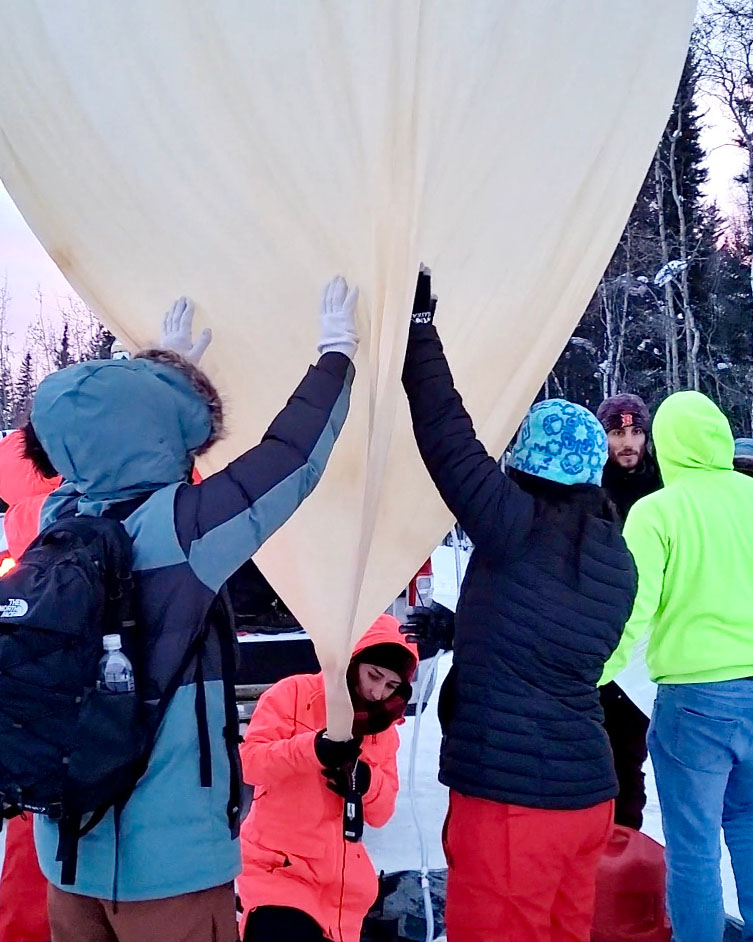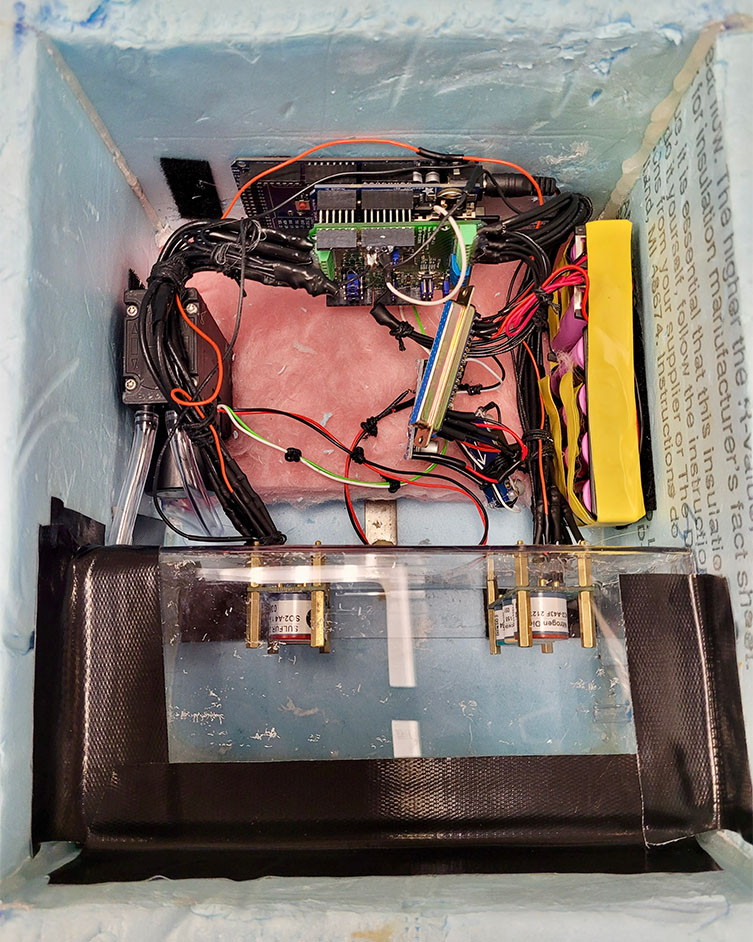Field Experiments Put to Test During NASA-Inspired Project
Most people think a trip to Alaska means playing in the snow or enjoying crisp, cold air. For University of Houston students participating in the Undergraduate Student Instrument Project (USIP), the trip means much more.

USIP gives students the opportunity for hands-on learning, collaboration and putting their research skills into action as they observe environmental and climate change on our planet.
The project, developed by NASA and organized at the UH College of Natural Sciences and Mathematics by Edgar Bering, physics professor, and Andrew Renshaw, physics associate professor, is a two-year project that involves multiple classes in which students design, research, build and launch experiments to study the earth and environment. Hosted by the Geophysical Institute of the University of Alaska Fairbanks and the Poker Flat Research Range, a select number of students traveled to Alaska to test atmospheric monitoring devices and other instruments they developed.
For about three weeks in Fairbanks, Alaska, 16 UH students participating in USIP conducted experiments for radio distortion, gaseous compounds, microplastics, auroral spectroscopy and geophysical imaging of ice wedges.

Understanding Atmosphere and Climate Change
Celine Saidy, a biology major who traveled to Fairbanks, was project leader for the gaseous compounds project.
“The purpose of this project was to create a device that can measure the amount of trace gases in the atmosphere,” said Saidy.
Saidy’s group sought to gain better knowledge about the behavior and impacts of trace gases in the atmosphere. They measured nitrous oxide, nitrogen dioxide, carbon monoxide, ozone, sulfur dioxide and hydrogen sulfide. The presence of each contributes to the complex makeup of the atmosphere and its interactions with climate, air quality and the overall health of the planet.
“By gaining a better understanding, we can develop new strategies to address climate change and the environment,” Saidy said.
Instead of using newer drone technology to deploy their project, Saidy and her team opted to use a weather balloon. “The balloon has freedom to fly higher into the atmosphere,” Saidy said. “The higher you go, the more uniform the elements in the air.”
Uncovering Hidden Problems Beneath the Surface
Presley Greer, a geophysics graduate student, led experiments examining permafrost and the formation of ice wedges.
When snow melts in the warmer seasons, the meltwater migrates down into thermal contraction cracks in the frozen ground. As this meltwater freezes, the newly formed ice within the cracks expands, resulting in the formation of ice wedges. These ice wedges continue to grow and expand as the cycle repeats itself annually in regions where the ground remains continuously frozen.

“The process creates a problem that’s similar to unstable soil, which leads to structural problems for homes and buildings,” Greer said. As ice wedges grow, melt and refreeze, it causes shifting soil. This is something builders in Fairbanks pay close attention to during the construction process.
“Since ice wedges can exist deep underground, I collected data with the help of ground-penetrating radar and drones provided by geology professor Shuhab Khan,” said Greer.
The study of ice wedges is significant to understanding the history of environmental conditions and climate change.
“The data the wedges hold help us reconstruct temperature variations, precipitation patterns and vegetation changes over time,” said Greer.
Auroral Spectroscopy Experiments Earn First Place
The students who participated in the auroral spectroscopy experiments in Fairbanks won first place at the American Institute of Aeronautics and Astronautics (AIAA) Region IV Student Paper Competition.

The group studied the aurora borealis, which is created when electromagnetically charged particles emitted from the sun collide with gases from the Earth’s atmosphere.
“We designed, built and operated two spectrophotometers, which are telescopes that separate light into their wavelengths,” said Ali Shariff, a USIP participant who graduated in May with a bachelor’s degree in mechanical engineering. “We took photos of the auroras to see the intensity at each wavelength with the goal of capturing specific auroral spectra.”
The project was based off work from previous UH USIP teams.
Shariff’s team set up the instruments at the Poker Flat Research Range in Fairbanks and spent close to two weeks collecting data from the instruments.
“I learned how to lead a team and really collaborate on difficult projects,” said Shariff. “It is one of my favorite memories while at UH.”
Their work will move on to an international competition at the 2024 AIAA Science and Technology Forum and Exposition in Orlando.
Working in Collaboration for the Future of USIP
The UH Office of the Provost Cougar Initiative to Engage helps to partially fund USIP, in conjunction with financial support from NSM and generous donors.
The project began in 2013 and is a collaboration between NSM, Cullen College of Engineering, the Technology Division and the Honors College.
The next USIP group will be launching balloons to collect data during the solar eclipse in October.
- Chris Guillory, College of Natural Sciences and Mathematics